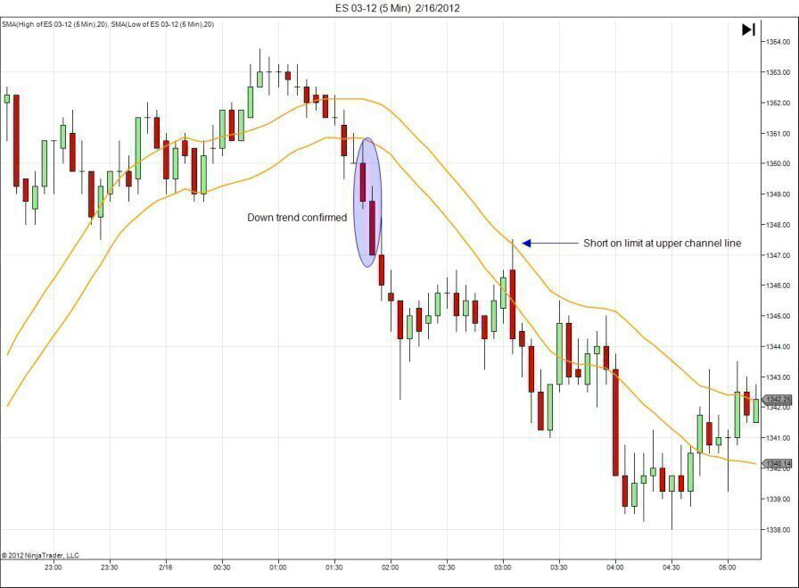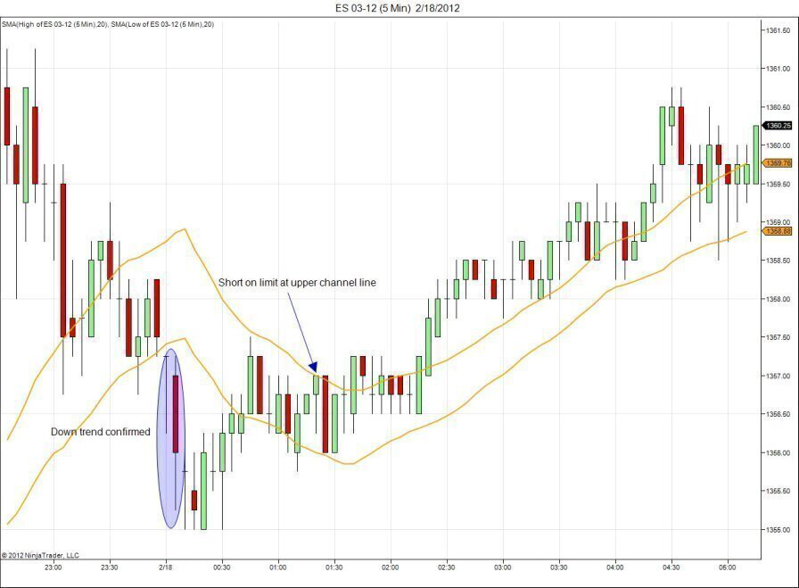💥Moving Average (MA) is a popular technical analysis tool that is used to smooth out price action and identify trends. It is calculated by averaging a selected number of prices, usually closing prices, over a specific period of time. The Moving Average is then plotted on the price chart to provide traders with an indication of the direction of the trend.
💥Moving Average Channels are two lines drawn above and below a Moving Average line at a certain distance or percentage. This creates a channel around the Moving Average line that acts as a dynamic support and resistance zone. When prices move above the upper channel line, it suggests that the trend is bullish, and when prices move below the lower channel line, it suggests that the trend is bearish.
💥Shifted Moving Averages are Moving Averages that are displaced forward or backward in time. This means that the Moving Average is calculated using past prices, but is plotted ahead of current price action. This can be useful in identifying potential support and resistance levels that may not be visible on the price chart using traditional Moving Averages.
💥Envelope Formation is a technique that uses two Moving Averages that are shifted a certain percentage or distance away from each other. The area between the two Moving Averages creates a channel or envelope around the price action, which acts as a dynamic support and resistance zone. The Envelope Formation can be useful in identifying potential trend reversals when prices move beyond the channel boundaries.
💥Overall, Moving Averages and their variations can be effective tools in identifying trends and potential support and resistance levels. Traders should use them in conjunction with other technical analysis tools and indicators to confirm signals and make informed trading decisions.
💥Additionally, traders can also use Moving Average Shift to identify potential support and resistance levels. A Moving Average Shift is created by shifting the Moving Average line forward or backward in time. This can help identify levels where the Moving Average has acted as support or resistance in the past and may do so again in the future.
💥Moving Average Envelopes are another technical analysis tool that can act as support and resistance levels. They are similar to Moving Average Channels, but instead of being drawn at a fixed distance or percentage from the Moving Average line, they are drawn at a fixed percentage of the price. This creates a channel that widens or narrows based on the volatility of the price. When prices move above the upper envelope line, it suggests that the trend is bullish, and when prices move below the lower envelope line, it suggests that the trend is bearish.
💥Overall, Moving Averages, Moving Average Channels, Moving Average Shifts, and Moving Average Envelopes can all be used to identify potential support and resistance levels and help traders identify trends in the market.
💥💥The Moving Average line that uses a short number of days in its calculation may give false signals because it moves too quickly. To filter out these false signals, some technical analysts prefer to use a Shifted Moving Average line. In the case of a buy signal, the Moving Average is shifted up, while in the case of a sell signal, it is shifted down. Shifts are generally expressed as a percentage of the Moving Average, and they are often used with Moving Averages that use a short number of days for their calculations.
💥Another important use of shifting the Moving Average line is to create an Envelope that serves as a framework for price movements. In practice, this is often referred to as a Moving Average Channel or Band. The Envelope is used as a short-term support and resistance zone, and the price will move within this Channel or Band as long as the trend remains unchanged. To determine whether the trend is changing or not, the primary tool used is the central Moving Average. In essence, this system uses the Moving Average as a trading signal for the primary trend, while the Channel or Band serves as a secondary trend trading signal that moves along with the primary trend.
💥The upper line of the Band (Upper Channel) acts as a resistance. When the price approaches the Upper Band, it serves as a warning signal that the price has already risen too high, and traders should gradually sell some of their holdings to take profit in the short term. For the long term, it is advisable to follow the main trend using simple moving averages. On the other hand, the lower channel of the band acts as support, meaning that if the price falls close to the Lower Band, it is a warning that the price has dropped significantly, and traders should be prepared to wait for some time in the short term.
💥In practice, traders should understand the difference between shifting a moving average to filter out false signals and shifting a moving average to create a support/resistance envelope. They must always be aware of what they are doing and the purpose of their Shift.
There are several ways to create a Moving Average Channel or Band.👉This method is built on moving average lines, with the Upper Channel calculated from the high and the Lower Channel calculated from the low. We call this band the High-Low Channel. The most commonly used values are the 10-day average of the high and the 8-day average of the low. This method is commonly used to filter out false signals, but it can also be modified to create an envelope if appropriate parameters are set.
👉Percent Shift: This method shifts the moving average up (to the Upper Channel) and down (to the Lower Channel) by a percentage of the moving average calculated from closing prices. A popular percentage shift amount is 3.5-4% for a 20-25 day moving average. This is also a way to filter out false signals. However, this method has a disadvantage, which is that the magnitude of the shift when measured in absolute terms is small when the price is low, but quite large when the price is high. Therefore, the size of the band will continue to widen as the price goes up, and gradually shrink as the price falls. This may cause traders to buy too soon (due to a low price and less shift) or sell too late (due to a high price and high shift).
👉The method of shifting to create an envelope originated from a study by John Hurst, which was conducted in the days when computers were not as prevalent as they are today. The envelope is based on the moving average, whose number of days is determined by the length of the cycle, and must be able to cover price movements in a shorter cycle. However, this is a rather subjective approach since different people may draw different images.


💥Marc Chaikin, a well-known technical analyst at Bomar Securities, suggests that using a percentage shift for the moving average may not be flexible enough. For example, at one time, 3% may be too much (for instance, when the stock is moving sideways and not bouncing anywhere, the band will be too wide), while in other cases, such as when the stock follows a steep trend, 3% will be too narrow (the stock will run through the band like a locomotive). Hurst's envelope construction is also somewhat dependent on individual thoughts, which is uncertain. Therefore, the market should help determine the percentage of the shift at any given time.
💥The concept of Bomar Bands originated from Marc Chaikin's suggestion to shift the moving average in percentage terms such that it covers at least 85% of past prices. For example, if we use a 25-day moving average, the percentage shift today should be large enough to cover 85% of the prices of the past 25 days. The Bomar Bands adjust their percentage shift depending on market conditions, indicating trend inertia. If the market moves sideways, the percentage shift is small, but it adjusts to a higher percentage when the price follows a trend. The Bomar Bands narrow when the price starts to stagnate or the sales force runs out, even if the price continues to rise or decline. The width and narrowness of the Bomar Bands can be used as signal indicators of the main trend.
💥John Bollinger further developed this concept by shifting the moving average in proportion to the standard deviation of the price, typically 11.96 (or 12) times the standard deviation calculated from the number of days used to calculate the moving average. The resulting band should cover up to 90% of the past price if the price had a normal distribution. Bands calculated in this way are called Bollinger Bands, which have the same properties as the Bomar Bands, with their width and narrowness adjusted according to market conditions. The Bollinger Bands use standard deviation, which is an indicator of the variance or volatility of the price, making it easier to calculate than the Bomar Bands, which rely on subjective adjustment of the percentage shift.